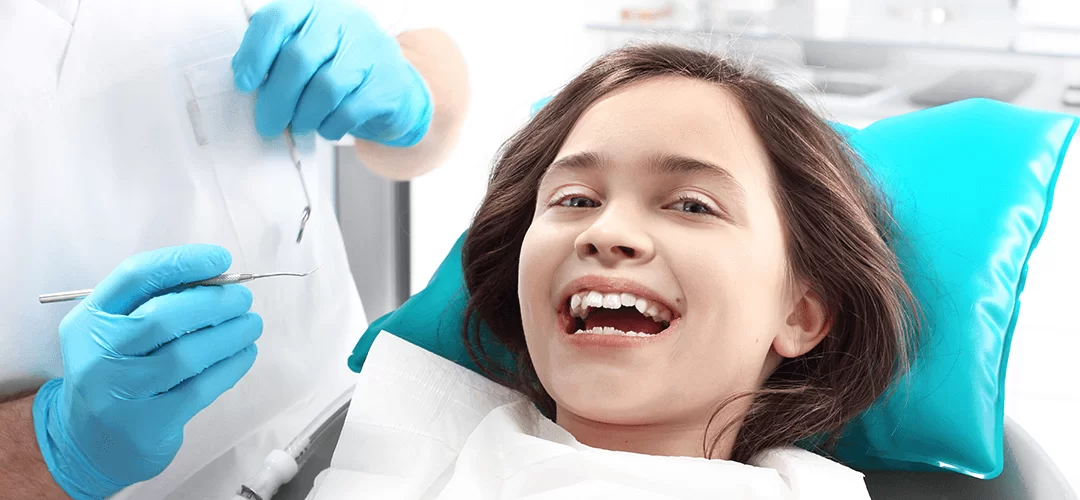Have a Question?
Contact Us Now
Contact Us Now
What is Early Orthodontic Treatment?
Children can be candidates for orthodontic treatment from an early age. The American Orthodontic Association states that children should have an orthodontic examination when they are 7 years old. The first permanent teeth to erupt in our mouths are the lower and upper incisors, then the first molars erupt around the age of 6-7. It is possible to diagnose problems such as malocclusion in children early after these teeth erupt. In addition to malocclusion at this age, problems such as crowding, deep bite, open bite, and cross bite can also be diagnosed and treated early.
Not all diagnosed problems can be treated at an early age. Some problems require intervention around the age of 12-13. Early treatment, which we call Phase 1 treatment, can also be financially comforting for parents. Because when treatment is delayed, you will deal with bigger problems, and therefore the cost will be higher.
Early orthodontic treatment, which we call Phase 1 treatment, helps prevent serious malocclusion problems, ensures that the jaws grow correctly, and can provide the necessary space for permanent teeth to come. In addition, severely crooked teeth make it difficult to provide adequate oral hygiene.
Early Detection of Treatment
There are several ways to understand whether your child needs early treatment. If your child has any of the following, it is useful to see an orthodontist:
Early orthodontic treatment is performed while the child's bones are still soft. Bones begin to harden after puberty. When the bones are soft, it is much easier to direct and correct their development than in adults.
Not all diagnosed problems can be treated at an early age. Some problems require intervention around the age of 12-13. Early treatment, which we call Phase 1 treatment, can also be financially comforting for parents. Because when treatment is delayed, you will deal with bigger problems, and therefore the cost will be higher.
Early orthodontic treatment, which we call Phase 1 treatment, helps prevent serious malocclusion problems, ensures that the jaws grow correctly, and can provide the necessary space for permanent teeth to come. In addition, severely crooked teeth make it difficult to provide adequate oral hygiene.
Early Detection of Treatment
There are several ways to understand whether your child needs early treatment. If your child has any of the following, it is useful to see an orthodontist:
- Early loss of baby teeth
- Teeth not closing normally when they close their mouth
- Mouth breathing and snoring
- Crooked teeth in the upper and lower incisors
- Difficulty eating or chewing
- Speech disorder
- Loss of the lower jaw when your child opens/closes their mouth
- Finger sucking even though your child is over 5
Early orthodontic treatment is performed while the child's bones are still soft. Bones begin to harden after puberty. When the bones are soft, it is much easier to direct and correct their development than in adults.
What are the types of orthodontic treatment at an early age?
Face Mask
A face mask is used in cases where the upper jaw is too far back compared to the lower jaw. In orthodontics, this condition is called "Class III orthodontic disorder". The face mask pulls the upper jaw forward by taking support from the lower jaw and forehead. By bringing the upper jaw forward, both the dental occlusion is corrected and facial aesthetics are improved. Face mask treatment is usually applied to children who have not completed their development. Therefore, early examination and diagnosis are important.
Functional Orthodontic Treatment
Functional treatment is applied to correct the upper jaw that is forward or the lower jaw that is backward in growing children.
In cases where the lower jaw is behind the upper jaw, the upper front teeth usually look like they are protruding outwards. Upper teeth that protrude in this way are prone to trauma and are usually made fun of by children. Therefore, treating this anomaly both eliminates the possibility of teeth breaking and reduces the child's psychological stress.
The appliances used for functional treatment solve the problems we call 'Class II orthodontic disorders' in orthodontics. In this disorder, the upper jaw may be forward, the lower jaw may be backward or a combination of the two. Functional appliances can be either bonded to the teeth or movable.
In cases where the lower jaw is behind the upper jaw, the upper front teeth usually look like they are protruding outwards. Upper teeth that protrude in this way are prone to trauma and are usually made fun of by children. Therefore, treating this anomaly both eliminates the possibility of teeth breaking and reduces the child's psychological stress.
The appliances used for functional treatment solve the problems we call 'Class II orthodontic disorders' in orthodontics. In this disorder, the upper jaw may be forward, the lower jaw may be backward or a combination of the two. Functional appliances can be either bonded to the teeth or movable.
Upper Jaw Expansion
Jaw expansion appliances gradually widen the jaws to create more space in the child's jaw. This may sound a little scary, but the procedure is easy and children get used to these appliances easily. The goal of jaw expansion is to move the bones, which are made up of two pieces of bone, away from each other and create bone in between. These two pieces slowly begin to fuse after puberty. It is easy to expand the two pieces of bone before they start to fuse. After the expansion process is complete, the appliance is used for a while to fill the gap with bone.




